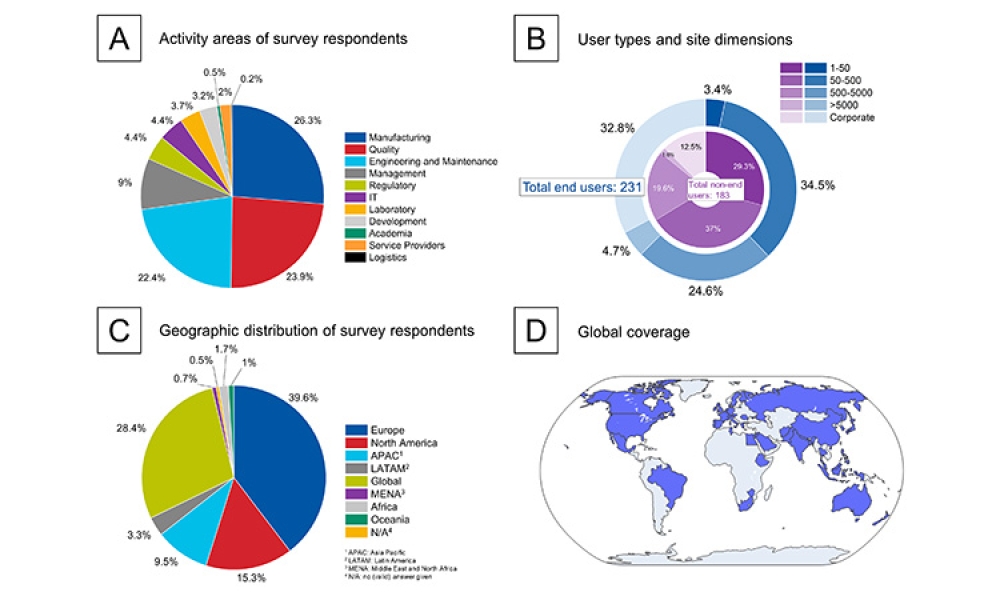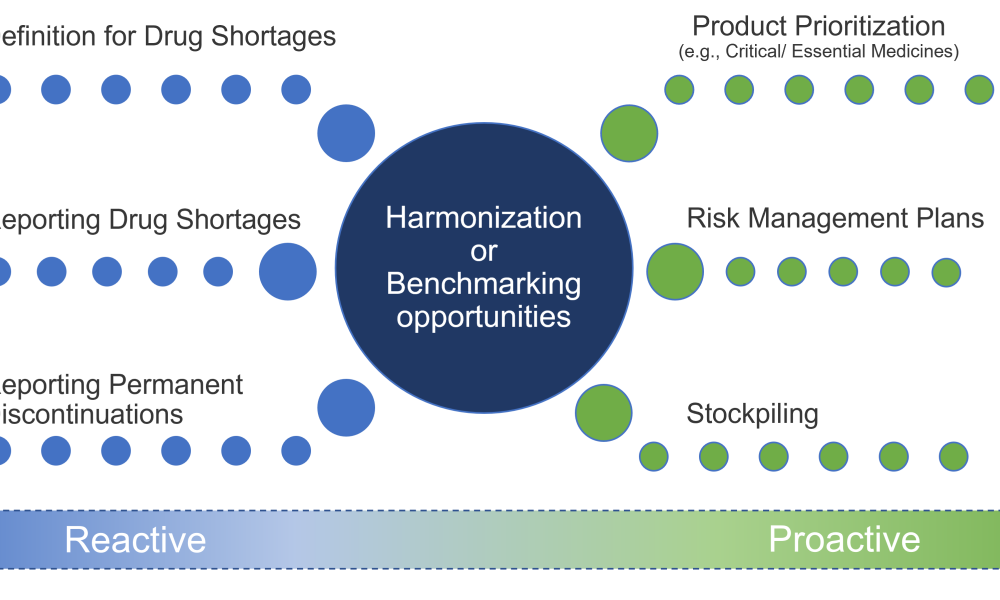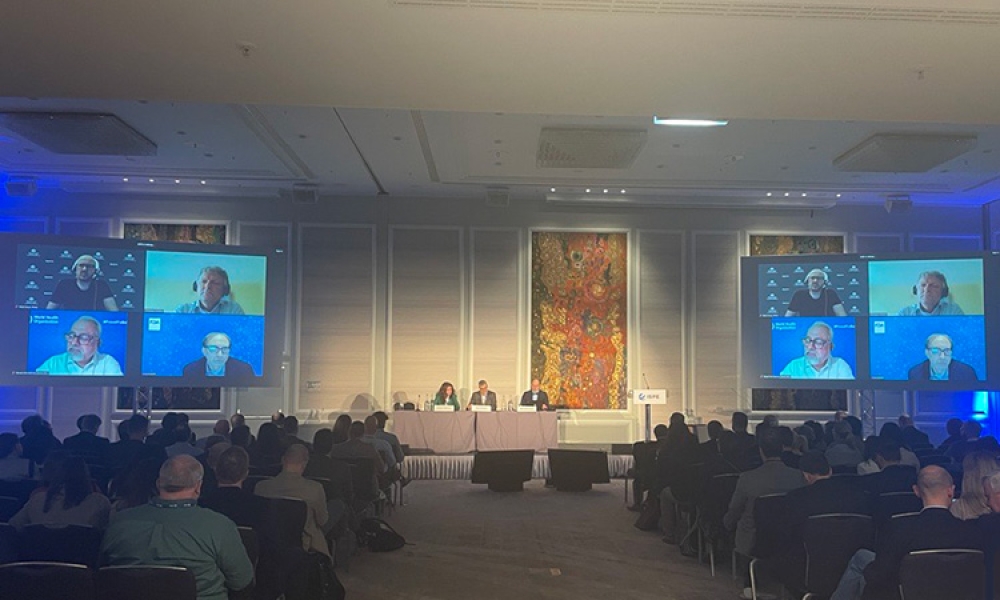2021 ISPE Aseptic Conference Regulatory Panel

The 30th ISPE Aseptic Conference culminated in the interactive regulatory panel, which offered attendees the unique opportunity to ask questions directly to the regulators.
Participants in this year’s virtual panel included representatives from the US Food and Drug Administration (FDA), the UK Medicines and Healthcare products Regulatory Agency (MHRA), and the Therapeutic Goods Administration (TGA) of Australia:

The answers given by the panelists represent their personal views and cannot be interpreted as the official position of their respective agencies. However, the comments offer good insights into current thinking.
What are some of the learnings from the current distant assessments during the pandemic?
Alyce: We [TGA] started the remote domestic assessments at the TGA in March 2020 and the overseas assessments commenced in August 2020. Initially there were issues with the type of platform and the speed of the internet; overall, there were no restrictions with remote assessments. The host will do a site tour and direct the camera to any area we requested, but the manufacturer controlled it. We might not potentially see everything we would see if it were an onsite inspection. There is also less interaction with staff (onsite).
There were some benefits: we do not spend any time traveling to sites especially in rural Australia, which could constitute half of the total time. Gazing into the future TGA may keep remote assessments for low risk manufacturing and areas difficult to travel to as part of our way forward once the pandemic is over.
For any remote assessments, you need to agree on the IT platform beforehand. Also, it is important to ensure that inspectors maintain the privacy and confidentiality of all electronic data that are submitted. We need to assure the manufacturer of maintaining that confidentiality. We have observed that we request more information for remote assessments. We have also defined several key elements that we would like to review as part of pre-assessments and pre-preparation. Manufacturers have raised concerns regarding the sheer volume of documents that are being submitted. A key point about managing remote assessments is to ensure multiple communication platforms are available including the capability of providing different channels if there is a team of inspectors. It is also important that if the WiFi is disconnected, one could use a smart phone. This may allow better mobility when doing the site tour. In terms of assessments findings, we see a tendency to see more documentation deficiencies, but that is probably because we review so many documents.
Alan: There are benefits from remote assessments, as they should be called. An inspection is defined as a visit to the site. The process has helped us maintain a level of regulatory oversight and remain within the risk-based schedule, and we have learned along the way that the clear majority of the companies are very receptive to the process. It includes a level of flexibility, so travel to remote places is not necessary.
Whether the MHRA will incorporate [remote assessment] into the business as usual post-pandemic has not been decided yet. Most probably it will, but some things just cannot be replaced. You lose the social cues when you are interacting with the people on site and you can sometimes “see” where perhaps they don’t want you to dig any further in a certain process. I know that PIC/S is working on standards on how distant assessments can be used in the future.
Alonza: I agree with my colleagues from TGA and MHRA, but let me just say that on the onset of the travel restrictions, it focused the FDA inspectorate on the mission-critical inspections, like ATMPs [advanced therapeutical medicinal products], breakthrough therapies, drugs for serious conditions where there are no alternatives, COVID-related treatments, and to take actions to avoid any drug shortages.
We have used record requests both for surveillance and for preapproval purposes, and we have been able to approve several applications based on record reviews. We have also increased analytical testing on products ranging from hand sanitizers to finished drug products.
We have continued to use the mutual recognition agreement with the European Union, and we have even expanded it. Veterinary drugs are now also in scope. We have even used the MRA to access inspection reports from inspections by MRA countries in other countries. We have been working closely with other agencies within PIC/S [Pharmaceutical Inspection Convention and Pharmaceutical Inspection Co-operation Scheme] on inspection reporting, as well as our import screening and intelligence on imports that we receive from regulatory bodies around the world. One of the things that we have almost completed is a protocol for remote assessments in combination with record requests. Learnings have been shared with other agencies on how to set these up technically, but as said, you do miss the certain human cues or things you might accidentally see on a facility walk-through.
How are the various regulatory agencies involved in the review of industry comments on Annex 1?
Alan: The working group and the review of the document have really been a global effort, with participants from PIC/S and WHO. They are not just observing, but are participating in shaping the document on the way forward. The comments are currently being evaluated by chapter. Every single line of comment is being considered and evaluated.
Rick: FDA is involved via PIC/S, and that helps to promote alignment between regulators on GMP interpretations.
The Contamination Control Strategy (CCS) will become a key document through Annex 1 revision to define the approach to sterile product manufacturing. Will the regulators expect a CCS during cGMP inspections?
Alan: The important thing to note here is that well-managed facilities will already have all the elements of what we now call CCS in place. There is no shift change here. What maybe has not been focused on up to now is how those individual elements interact, so we would expect a high-level document that pulls it all together. We don’t expect people to rewrite everything from scratch. There is also the element of regular review of those documents and the CCS.
Brooke: We agree with Alan. We always expected companies to assess the effectiveness of the controls and measures in place to minimize risks of contamination. FDA warning letters highlight when this is not being done. Our request is similar to what Annex 1 refers to in a CCS. Our terminology might not be the same, but the expectation is the same.
What is the regulator’s view on PUPSIT?
Rick: The FDA guidance says that PUPSIT [pre-use post-sterilization integrity testing] can be done prior to processing, and it adds that a post-use test should always be done. The draft Annex 1 provides for a risk assessment for the pre-use test. So, while the EU Annex 1 has always been more descriptive, the expectations are essentially equivalent in the US and the EU. From an FDA perspective, nothing has really changed. We also know that there has been recent research by some organizations on the topic, which is very valuable and helps to further inform the science on pre-use integrity testing.
Alan: I agree with the alignment mentioned by Rick; we really want to achieve the same thing. PUPSIT has been a requirement for a long time in the Annex 1, but there has been more discussion with the publication of the recent draft revision. It will continue to be the expectation that it is to be done, but there are provisions in the Annex 1 to exclude PUPSIT under certain circumstances with robust justification and risk assessment.
The organizations [PDA and BPOG] have done some investigative work to try to understand the nature of the phenomenon that until recently has been largely theoretical in terms of filter masking of a partially failing filter by the filtration process itself, and through that work, they appear to have demonstrated that it actually could happen. And from what I understand, there is more work being done to understand the nature of the failure mode, with a goal to feed into a framework for risk assessment on a case-by-case basis (product, process, and system). It is commendable to do that work to understand the risks.
What are the most common observations in inspections of aseptic facilities?
Alyce: What we see a lot of are deficiencies in the facility designs, in people, material, and waste flow. Another area is in environmental monitoring (EM), with validation of the sampling points not being adequate. Sometimes, we see EM performed weekly, monthly, or yearly with no data to support the number of sampling points and how often EM is performed (frequency). There seems to be inadequate understanding of the differences between active and passive pass-through hatches and the management of the pass through when used to receive (transfer) material into the clean rooms. There are times where no consideration is given to perform EM for the pass through. We also see deficiencies in the gowning and degowning areas and processes, as well as the general validation of disinfection processes and insufficient line clearances.
Alan: The concept of trying to validate bad practices is something we see more often than we would like to. For example, including an intervention in a media fill does not make it okay. I have seen on occasion people simulating a power outage. The general behavior in cleanrooms is often a concern, with people moving more quickly than they should. You might not see it live in the facility, but when companies have recordings from CCTV cameras, you might get a real picture. We also see fundamental design issues, with operators doing things in the cleanrooms with no fault of their own, but due to the fact of how the equipment is designed.
Brooke: Poor design, poor aseptic behavior, and manually intensive interventions all can undermine the necessity of asepsis. With smoke studies, we often see that not all critical interventions are included in them, but also [companies] not doing anything when the smoke studies show turbulence. Also, high on the list is inadequate investigation into failing media fills: not getting to the root cause of failures, no CAPAs [corrective and preventive actions] identified and implemented, and continuing operations.
Thomas: From my perspective, I often see swing-conveyors to get from one side of the filling room to the other, for interventions or environmental monitoring. And in that machine design, the swing conveyor is in an ISO 5 area, which is great as long as the access doors are closed. Moving the swing conveyor, because of its length, it moves into an ISO 7 area. In this particular case, the conveyor is moving partially stoppered vials to the lyophilizer. There is no nonviable monitoring performed either during the transfer or during the intervention. Without that data, do we know if ISO 5 conditions are being maintained? Also, viable monitoring is missing.
I applaud everybody using video cameras to observe aseptic filling, but the cameras are invariably positioned high up in the rooms and are looking downward to the filling equipment. That perspective precludes me from seeing any manual interventions, so I then ask the question, “Quality assurance, what are you trying to achieve here? Help me understand your perspective and your evaluation.” My concern is the limited view that you are getting. I am old-fashioned, I like to observe processes for extensive periods of time.
Rick: Similarly, it is also so important for sterile SMEs in a company to stand and observe the process for hours to gauge the hazard posed by both planned and unplanned events. Microbiologists and engineers should be detecting aseptic breaches and identifying any difficult-to-perform interventions and work-arounds that are indicative of variation in the process that can lead to product contamination. A well-functioning quality system will detect major process weaknesses and won’t rely on an inspector to discover them. Too often, people have a false sense of security that the process, as it originally designed, does not need that kind of scrutiny. But, of course, you are always learning and improving! That is how a quality-focused organization must think, how a manufacturer of medicines must think, and how we as regulators must think. Instead of blaming and retraining operators, the process design should set up operators for success. We see many contamination investigations each year and the root cause of these events are nearly always attributed to human interactions with the processing line. Larger leaps forward in technology should be part of long-term resource planning. Too often, we see only short-term fixes. Executive management have the ultimate oversight role and accountability for making needed improvements. There are still too many lines out there stuck in 1900s technology that are not up to international regulatory expectations for use of contemporary technology.
Thomas: I would like to add a note on media fills. Nobody wants a media fill failure, and everybody panics when it happens. However, I applaud a media fill failure, because it is an opportunity to identify the gaps that exist in your process. I would offer, if there are some manual operation or an activity that occurred during the aseptic process simulation and it was a source for the media fill failure, this does provide any organization the opportunity to identify the aberrant event and correct the concerns. I see this as a good opportunity, so that the manual operations or production activity that created the aberrant events, now corrected, do not occur during the routine aseptic filling operations of a finished drug product.
Alan: In the agency, we perform mock-recall exercises to evaluate our systems. How about a simulated media fill failure to critically evaluate the process? That would provide a more proactive approach.
What is your take on troubleshooting with a robot inside a filling machine by remote control? It is kind of human (control) and at the same time it is not (separation).
Rick: That is kind of a learned skill for a robot just like it is for humans. When line troubleshooting is done by an operator, the skills or dexterities of the operator will determine the likelihood of errors. It can vary from one individual to another. The nonroutine aspect of troubleshooting could add some atypical elements and further complexity for both humans and robots. But for the latter, there is great risk mitigation potential since humans are not directly performing the aseptic activity.
Robotic equipment, programming, and user skills are very important variables. For example, there has been robotic surgery for some time, and it has helped reduce the number of infections. And it provides a close analogy to aseptic processing. What they have found in doing surgery with robots is that there were depth-perception issues, signal latency issues, high-resolution imaging problems, and the “feel” was missing. So, improvements were made in the “haptics,” to more effectively maneuver the robots, with real-time feedback. For a sterile process, this would be similar to removing a tipped vial. It is a combination of skilled workers and the right equipment in unplanned interventions. And the unplanned interventions can vary in how difficult they are to resolve. As noted in my presentation, some of these atypical interventions by robots may have major similarities, and will be informed by AI and machine learning. It involves a different type of complexity and supervision. But we are bullish on robotics. It just needs careful design and control, and, frankly, as with supervision of human performance, there needs to be real-time robot performance monitoring.
How are regulators considering machine learning with respect to validation—when known inputs can yield outputs that cannot be 100% known?
Rick: Change management and maintaining a validated state still matter. There needs to be a level of verification and validation that will precede deployment each time, but the change management can provide for rapid deployment where appropriate. There needs to be an understanding of models with known boundaries as to what has been qualified so far. And as machine learning takes place, you need to monitor that closely, including testing or verifying. This will take place initially during design, but models are never perfect. Modeling is done by humans and integrated into programming and then there need to be checkpoints along the way, with knowledge of what operating space is proven to be valid. In this complex world that we are in, we want to allow nimble changes, but we want to underscore that change management and validation still apply to 21st century technology and should use a quality risk management approach (ICH Q9) to assure robustness.
Alan: I would like to come back to the point that Thomas was making on smoke studies: What is it that you are wanting to achieve using the new technology? Is it clearly defined in your user requirements? And then you need to recognize that the machine learning is relying on the data in the code. Do you have the quality of the data that is required? You only get out what you put in, and if what you put in is wrong, this brings you further away from expected results.
Bob: Machine learning associated with equipment needs to be validated; you are learning as you develop your processes. If something comes out different than expected, you take that into account and make changes as necessary. When known inputs don’t lead to known outputs, we are concerned. That raises a flag for me, not that it is necessarily good or bad, but it is definitely a question mark.
Thomas: When I read the question, I went back to the basics: You buy a piece of equipment, and it is designed to do certain things, which are described in the user requirements. It works great. A few years from now, it begins to wear; there have been modifications and change controls, and they change some of the initial design features—and there is nothing wrong with that. Those small changes combined, when collectively considered as a whole, might require requalification of the equipment and a revalidation of a process. In the end, you should always know what your outputs are and have the outputs changed due to adjustment or changes to the qualified equipment.
What are the three key points that the regulators look for in a smoke test at Grade A?
Brooke: Smoke studies really illuminate the design weaknesses that pose contamination hazards. The studies obviously need to include dynamic operations and include all critical interventions. We often see that not all interventions are included, and that not enough smoke is being generated to visualize the interventions as they are performed. Any non-unidirectional airflow needs to be identified as it is seen and needs to be addressed. This could include making adjustments in the design, the operation, and the ergonomics. You should take the learnings and practices and show them to your operators. The studies have visualized what you want to be done during operations. Some of the better studies that I have seen use multiple cameras to capture the airflow from various angles and that helps decrease obstructed views.
Alan: Including all interventions is key, and sometimes you see studies that do not include the setup, which is the biggest intervention! It is important to understand the risks that come from that. And as Brooke said, learning from the studies should be shared with the operators and will help you understand your processes and can help in other parts of the control strategy, like defining environmental monitoring locations. Smoke studies are a powerful tool and should not just be performed because the regulators request it.
Thomas: Fundamentally, what is it that you want to accomplish by performing an airflow visualization simulation, aka smoke study? And how are you going to illustrate and articulate it to a third party—for example, a regulator? Sometimes, I read the policies and procedures and they are well written, but what we really need to see is not described. We want to see that there is unidirectional airflow and if there are air eddies or air turbulence that the air is moving, for example, downward and outward from the aseptic filling zones. Whether you have a RABS [restricted access barrier system] or an isolator, what I will concentrate on is if there are any turbulences, does the air turbulence create conditions or become a vector which could lead to contamination of the product.
Is it possible to perform unloading from LYO and capping using RABS system with background C? (Camera check of stoppers is in place.)
Alan: It is important to note that the stoppered vials should remain under grade A air supply until they are capped, provided that systems for detection of displaced stoppers are used. If that is the case, this seems feasible. Often, the loading and unloading of the lyophilizer is through the same door. For loading of filled and partially stoppered vials, this needs to be under full grade A conditions, so a RABS with a grade B background is appropriate. To switch the classification between loading and unloading in this case would seem a little strange.
Brooke: We had issued a warning letter to a company a few years back with regard to the design of their filling line. They did not have a RABS, but some sort of filling cabinet, and that opened to an ISO 7 area. For interventions, the operators had to open a large door. That door was exposed to ISO 7 air when opened, and there was a significant risk of lower quality ISO 7 air sweeping into the ISO 5 filling cabinet when closing the door. The sterilized, open empty vials were extremely close to that door within the cabinet. There were also cleaning issues. After opening the doors, the operators would do a wiping, but would not reach all areas. Design and operational aspects contributed to an unacceptable risk of contaminating those vials.
What kind of containment measures are expected for live virus manufacturing?
Bob: The containment measures for live virus manufacturing are a complicated issue, and while we do not have specific guidance for it, there are regulations that can be applied here—it largely depends on the stage of the process. 21 CFR 600.11 E 4 can be used for a reference. There, some of the concepts around the appropriate controls are described: Dedicated areas are preferred, containment is often necessary, and cross-contamination control is a necessity.
This is a very complicated issue we are discussing here. What does live virus manufacturing really mean? If you are developing a process and think of building a facility, we recommend you drop a line to the FDA, and a Type C meeting could easily be set up.
Alyce: I just want to echo Bob’s comments. What we tell our manufacturers is, “You tell us what you are doing, and we will review it and ensure that it is in line with GMPs.” We have discussions with the company when there are issues, and evaluate their responses. Some of the questions surrounding (CAPAs) include the following: How are you addressing the virus risk mitigation in the manufacturing area? How do you as a manufacturer ensure that your process minimizes entry of viruses (contamination)? Do you select low-risk starting materials, including single-use consumables, to ensure that they are not contaminating the rest of the processes with the live virus?
What we need to look at more nowadays are validations of in-process testing—for example, for ATMPs with autologous cell therapy and live viruses. You cannot back-end purify ATMP products as you would do with products using other processes—for example, plasma-fractionation. It is important to develop an adequate viral testing platform and ensure in process and final QC testing.
Does live virus filling need to be segregated from other non-viral filling operations in a multi-product facility when filling in an isolator?
Bob: The answer from before already informs on this. Usually, by the time we get to filling, any live virus has been inactivated and should not be replicative at that stage. The specifics are important, and a meeting with the FDA to determine the course of action is advisable for such a shared facility.
For inoculation suites—where inoculation is handled for ATMP vector manufacturing—the guidance says that the BSCs [biological safety cabinets] can be located within a C space. Agree?
Bob: The way I interpret this, this seems to be upstream processing, so it could be okay to have the cabinets in a Grade C space. For production in the US, this would be assessed during process development, both for upstream and downstream operations. Again, I encourage people to contact us, set up a Type C meeting, and make that determination.
Trends are moving toward use of closed, single-use systems. This brings new risks regarding sterility assurance. What risks/issues have you observed with implementation of single-use systems?
Alyce: I find that there sometimes could be a major issue with the subcontracting of the sterilization of single use systems, whether it is gamma radiation or E-beam. At the TGA, it is different teams looking after contract sterilization facilities and those inspecting fill-finish operations, and my personal comment is that we don’t interact enough. Validation of those sterilization processes is often not in line with our expectation for pharmaceutical processes. We are telling the manufacturing companies for sterile products to make sure that they have audited the sterilization sites and get proper certification. They should ensure the contract clearly establishes the duties of each party. If they are sterilizing the single use consumables, to make sure it is adequately validated including using validated stability data (expiry date).
What documentation will be required for proof of ability to process a liquid fill on a shared line while a different product is located inside of the accompanying (closed) lyophilizer? Okay for potent?
Alan: It depends. This is the sort of very specific scenario where not all information is available from the question as it stands. What mitigation strategies may be in place here? And what is the outcome of the risk assessment? And when I am talking about risk assessment, I do not mean the sort of GPS risk assessment that gets you to the place you want to get to. Your starting point on a multiproduct line is that you only allow one product at a time, eliminating the risk of mix-up between products. To get to a more meaningful answer, we would need more details.
Alyce: It is quite important to have adequate risk assessment and quality by design from the beginning.
Thomas: There are manufacturers that have multiple fill lines feeding into a lyophilization room, and even multiple lyophilizers in that one room. Everybody will have line cleaning and clearance between batches, whether it be liquid fill or lyophilized, before the next batch is filled. Let’s imagine a batch that has been loaded into the lyophilizer. The line has been cleaned; there are many checks to be completed. There will be a lot of people that will try to multitask because there is an empty lyophilizer available. That decision must be risk based. I can’t tell the company that they cannot do that. However, what happens if they have a product mix-up?
One of the comments that comes up is around “first air.” Are there instances where open vials would be allowed to transition under tubing or such—even if it breaks “first air”?
Brooke: The key principle here is to not break first air. But the question is: Is it really happening? The smoke studies will be very valuable in determining that. Smoke studies can be helpful when making adjustments, and mitigating the risk by improving the process. All equipment in close proximity to open product represents a contamination risk and needs to be sterile, including the tubing we are talking about in this example.
Is it mandatory to have a double HEPA filter in the exhaust line of a cleanroom that produces hazardous materials inside an isolator?
Rick: There usually is at least one HEPA filter as good practice to prevent contamination of the HVAC ductwork. Double HEPA filters is not necessarily prescribed as a regulatory expectation.
Bob: We from FDA might not make it mandatory, but the local health authority might.
Alan: I agree. This is something where we are crossing into health and safety regulations, and it is not just GMPs. In addition to considering cross contamination of products, the health of the operators needs to be protected. As the company operating such systems, the risk in both those areas must be understood and mitigated.
Enzyme indicator is valuable for BI [biological indicator] position assessment. How does MHRA think about this technology?
Alan: As with any new technology, we are more than open to discuss and understand it. I would toss the ball back in the organization’s court to appropriately understand and validate the technology and, wherever possible, draw that equivalence to established methods. I personally have not seen the use of enzyme indicators widely. I have seen them used to monitor the room-decontamination process with ionized hydrogen peroxide, which also is a not widely used technology yet.
Taking a step back, I am sure my colleagues on the panel will agree that we are not averse to new technologies; we welcome it as long as there is understanding of those technologies. We also encourage people to approach the agencies to discuss these new technologies before implementation. In MHRA, we have the Innovation Office where we can discuss the plans.
As containment for BSL [Biosafety Levels] and HPAPI [high-potency active pharmaceutical ingredients] moves further into the aseptic industry, does the fill room for an isolated fill line still need to have a differential pressure for airflow out of the room?
Rick: From a design and control perspective you don’t want to operate at the edge of failure. The isolator room environment should still be adequately safeguarded. An isolator needs to be opened occasionally for cleaning, maintenance, or parts installation. People go in with various gowning levels to perform cleaning, setup, and maintenance, and then decontamination (such as VHP) occurs. Major contamination of surfaces with either organic or inorganic substances can compromise lethality against microbes. The air that is in that room, as well as the humans operating there, will add to the microbiological load and introduce other contaminants. Also, although glove and transfer mechanisms are generally very robust, detectability of a failure is not 100% assured, so maintaining a suitable room environment is part of the overall holistic approach to risk mitigation.
So it is important to establish an appropriate room separation and air classification concept. The cleanroom background for isolators is generally Grade C or operational Class 100,000, and an appropriate pressurization scheme helps to provide adequate separation from adjoining rooms. The isolator room can also include airlock access to the isolator room, and a couple of airlock pressurization options work well.
Regarding containment considerations, isolators offer the advantage that potent compounds can be exhausted through the isolator ductwork and not into the surrounding room.
The bottom line is you really don’t want direct access from a hallway or an office area with dead pressure to an area where you are doing aseptic processing. There are cost savings with facility footprint and HVAC requirements with isolators already; it would be penny-wise, pound-foolish to not appropriately safeguard the isolator room environment. If the room design and control approach represents a meaningful risk, it would receive significant inspection scrutiny.
Alan: It is coming back to the basic principles: We want to protect the product from contamination, so the layers of containment and protection all add up and lead into that containment of the aseptic processing area. There is probably not a one-size-fits-all solution; different facilities with different designs will be geared toward the intended process. But the fundamental principle is to take out avoidable risk wherever possible.
Can “human error” be the true root cause of a deviation? Will investigations closed with “human error” as the root cause ultimately be an invitation to regulators to delve deeper into the deviation?
Bob: Don’t just make up a different root cause j because you have determined it was operator error. Yes, we might look into it a little more closely, but don’t try to conceal it.
Rick: Right, human errors can occur. The issues is how does that impact your investigation? Human error is generally not the root cause, but instead a symptom of a design flaw... So when you see human error, do you stop the investigation right there? Usually, there is something in the design that would benefit from some improvement. Other industries, like automotive, semiconductors, and the nuclear industry, have removed humans from the critical operations and have automated processes, so we expect the pharmaceutical industry to move in the same direction when they see deviations and significant variability due to human performance in drug manufacturing.
Alan: In the EU GMP guide quality systems, chapter 1, it is said that a root-cause investigation should be appropriate, and where human error is suspected to be the root cause, that should be justified, to demonstrate that you have considered procedural and process issues and that it is truly a human error. Don’t just stop at human error, but do check if, for example, the procedure was unclear.
Can you have toilets and lunchrooms in a CNC area where visual inspection, assembly, labeling, and cartoning of aseptic filled products takes place?
Bob: No.
Rick, does FDA have plans to update the 2004 Aseptic Processing Guidance in the near (or distant) future?
Rick: We purposefully wrote the guidance to be sufficiently broad in our description of technological options and principles to allow for evolutions and innovations because we wanted the guidance to stand the test of time.
The original guidance itself is still foundational and very forward-looking: We mention robotics, use of advanced manufacturing and analytical methods, barrier technology, and the benefits of increased automation. BFS [blow-fill-seal] and isolators have their own sections.
There is, however, a great system in FDA allowing us to write Q&A documents, which are shorter GMP guidances, that are published on our website. These elaborate on the current thinking of the agency.
It is also possible that we might consider focused refinements of selected sections of the aseptic guidance. For example, the topic of robotics could be elaborated on because I think we currently have only one sentence on it.
Disclaimer
This is an abridged, unofficial summary of regulators responses during a panel dialogue at a conference that has not been vetted by the agencies. The content of this article was reviewed and edited by the participating regulators. The responses are an informal and brief synopsis of the panel’s views, and do not represent official guidance or policy of the regulatory agencies.
Acknowledgment
The author wishes to acknowledge David Doleski, Sanofi, for his contributions to this article.










